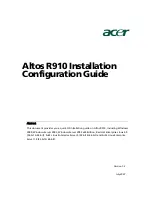
MAP 0360: POWER3 SMP Thin and Wide Node Minimum Configuration
MAP 0360: POWER3 SMP Thin and Wide Node Minimum
Configuration
This MAP is used to locate defective FRUs not found by normal diagnostics. For this procedure, diagnos-
tics are run on a minimum-configured system. If a failure is detected on the minimum-configured system,
the remaining FRUs are exchanged one at a time until the failing one is identified. If a failure is not
detected, FRUs are added back until the failure occurs. The failure is then isolated to the failing FRU.
Attention: When you disconnect a SCSI cable from the DASD, it is possible that some of the data
required to IPL the node will be unavailable. This can happen if a required filesystem is fully or partially on
the disconnected DASD. In this case, the node will only boot to a code in the range 517-518 or 551-557;
consider this a successful IPL for purposes of this MAP only.
Although boot disk is typically set to
hdisk0 (which is typically the disk located in the lower CPU chassis
DASD tray) it is possible that some other disk is defined as the boot disk. You can check the boot disk for
this node using
splstdata -b
(then look at address jumpers on the disks). If possible, keep this boot disk
in the configuration, even if it means physically moving the boot disk from the I/O expansion chassis to the
CPU chassis.
001
Check if this POWER3 SMP node is a thin node or a wide node (thin node with an
I/O expansion chassis.
Is this a wide node?
Yes No
002
The problem exists in the thin node.
– Go to Step 012 on page 1-218 to test the thin node minimum configuration.
003
Split the thin node and I/O expansion assembly.
– Shutdown the node.
– Set the circuit breakers to the Off (‘0’) position.
– Remove the I/O expansion control cable from J2 on the I/O planar.
– Remove 4 screws that secure the CPU chassis to the I/O expansion chassis, then separate the chassis.
– Remove the DASD cable (4-drop) from the I/O expansion assembly DASD.
– Unplug and reseat the node supervisor cable to recognize the new thin node configuration.
– IPL the thin node.
Does the node IPL properly?
Yes No
004
The problem exists in the thin node.
– Go to Step 012 on page 1-218 to test the thin node minimum configuration.
005
Remove the following components in the I/O expansion chassis bringing it to the minimum configuration:
Record the slot numbers of the PCI adapters. Label and record the location of any cables attached to the
adapters. Remove all the PCI adapters.
(Step 005 continues)
Chapter 1. Maintenance Analysis Procedures (MAPs)
1-217
Summary of Contents for RS/6000 SP
Page 1: ...RS 6000 SP IBM Maintenance Information Volume 2 Maintenance Analysis Procedures GA22 7376 01...
Page 2: ......
Page 3: ...RS 6000 SP IBM Maintenance Information Volume 2 Maintenance Analysis Procedures GA22 7376 01...
Page 8: ...vi RS 6000 SP MAPs...
Page 10: ...viii RS 6000 SP MAPs...
Page 16: ...xiv RS 6000 SP MAPs...
Page 20: ...xviii RS 6000 SP MAPs...
Page 60: ...MAP 0130 Processor Node Figure 1 7 Thin Node High Level Diagram 1 40 RS 6000 SP MAPs...
Page 383: ......
Page 387: ......
















































